By: By Jeanette Joy Harris and Steven Martz
“The Political Seducer’s Diary,” is an Instagram-based performance art exhibit by Performance Art Houston that ran from November to December 2017 on @PerformanceArtHouston. Inspired by Kierkegaard’s “The Seducer’s Diary,” the exhibit delved into the question of how “what is beautiful” might determine “what is just” and ultimately affect politics.
Jeanette Joy Harris, the organizer of the project and one of the contributing artists, reflects on it below:
The Instagram handle @kimkierkegaardashian has six posts, most of which would certainly make the great Danish philosopher Soren Kierkegaard cringe. One is a picture of one elephant giving another a bouquet of daisies, saying, “Some people won’t love you no matter what you do and some people won’t stop loving you no matter what you do. Go where love is!” Appropriate for Kim Kardashian’s very public romantic life, but ironic for a man who abandoned romantic love for a lifetime of philosophy. In short, @kimkierkegaardasian has used celebrity appeal to promote a philosopher. In this context, it is hard not to envision Kardashian in a tight designer dress, seducing people into attending a Kierkegaard lecture by using the type of banal pick-up line that a hostess would use to woo you into a sidewalk cafe.
As an artist, curator, and writer based in Houston, I am interested in this combination of the aesthetic and seduction, and especially in how it overlaps with public dialogue and politics. This is the goal of my recent Instagram-based, performance art exhibition, “The Political Seducer’s Diary.” Using social media as a platform, I invited eight artists from around the world to consider how aesthetics and seduction affect public life.
Julia Claire Wallace, director of Experimental Action, invited me to participate in the organization’s larger project that explores how performance art interacts with social media. Like me, Wallace is interested in the political possibilities of Instagram, particularly since its image-based platform would seem to make political speech a difficult endeavor. After conversations with Wallace and a recent reading of Kierkegaard’s “The Seducer’s Diary,” I asked my artists to delve deeper into how “what is beautiful” might determine “what is just” and ultimately affect politics. This resulted in the two-month exhibition, “The Political Seducer’s Diary,” which ran from November to December 2017 on @PerformanceArtHouston. Each artist took control of the handle for one week and looked at topics from assault to consumerism.
My project had two goals: First, to use the term ‘political’ in the classical sense, broadening it to a description of issues that are shared in community. This opened up the possibility for artists to look at social issues beyond party politics. Second, to use Kierkegaard’s articulation of aesthetics in “The Seducer’s Diary” as a starting place to ask the question: what if aesthetics not only guided our personal actions but political actions, as well?
I recently spoke with Steven Martz about “The Political Seducer’s Diary.” Martz, who participated as an artist in the show, holds a PhD from the University of Edinburgh and completed a dissertation focused on Kierkegaard.
Jeanette Joy Harris (JJH): Steven, first, I want to thank you for participating in “The Political Seducer’s Diary.” I was fortunate to have performance artists from around the world come together for this exhibition but it was important to me to keep a strong tie to Kierkegaard’s text and his idea of aesthetics and the part it plays in human interactions. Your series of works definitely accomplished that. I really liked how you merged images-as-text and text-as-images. It provided the show the blurring of philosophic and creative practices that I was looking for.
Steven Martz (SM): I was so glad to participate. The show certainly increased my understanding of what constitutes ‘politics’ or ‘the political’. It had me consider the range of acts that we deem to be political in nature. I think that I had too narrow a view of those acts which were in the political realm – shall we say public space – and those we might deem private. If we reflect on the nature of the polis – that ancient Greek dream of which we are the inheritors – then we are required to broaden our notions and recognize that the majority of our acts are political. I hope others who engaged with the show may have had similar moments of reflection.
JJH: I hope so, too. It seemed to me that the political component of the project was, in several cases, wrapped up in a parallel critique of consumerism, Vincent Campos’ work, his sleek images of sports cars in particular. I liked his works because they reminded me of posters of Lamborghinis in junior high school boy’s bedrooms. But Campos’ toy cars were not just about the purchase of the car but how he felt once he had the car and then how he interacted with the followers on Instagram. This brought about two thoughts for me. First how does this consumer-generated feeling guide Campos’ future political actions? Second, if Vincent can buy that Lamborghini, wouldn’t it seem that the world is in good working order? That feeling says to me that we need to be even more diligent in understanding and communicating political ideas as separate from markets.
SM: Even simpler than markets – there is a basic quantitative aspect to Instagram – number of likes and so on – that would seem to determine whether a post is “good” or not. I think this is misleading. I don’t believe an act (whether a post or a silent objection) can be considered successful or not by its reception or lack thereof. Anyway, democracy (particularly in terms of the aesthetic) is overrated when construed as immediate impact.
JJH: Could not agree more. An immediate like is not necessarily a well thought out concurrence with a message or image. Immediacy in democracy has been criticized in classical thinking through an evaluation of the demos, which is especially compelling seen in light of the 20th century development of fascism and totalitarianism and the burgeoning populism we can see in contemporary global politics; e.g., mass movements. But there is a polarity here: likes could indicate a true possibility for direct democracy with near complete participation or it could indicate the prevalence of mob mentality. Either way, by looking at likes we see what is considered “important,” culturally, and it tells us where the density of chatter un/fortunately resides. Most of the time this frightens me but it is interesting. Perhaps that makes me part of the problem? I don’t know. If this chatter lives in public space, though, doesn’t it necessarily point to aesthetically driven politics?
SM: Couldn’t we just ask, ‘what does it mean to be human?’ For me, all politics are aesthetically driven. It has been the case for as long as humans have organized themselves into communities. From the small family units to our current nation states, aesthetics has been, is, and will remain indivisible from politics.
JJH: If we consider social media as a possible political platform and aesthetics as integral to it, we must keep in mind Aristotle’s idea that we are “political animals,” e.g., people who speak and think in a world with others. How/can speech translate into a visual, Instagram world where text is unnecessary and in some cases arbitrary and incoherent? There are a number of artists, like Katya Petetskaya and yourself, who use text in this show by either appropriating Kierkegaard’s work, using first person confessional, or third person narrative. How does language support, subvert or divert their projects?
SM: There is always going to be an uneasy tension there. And this largely comes down to how we understand language or better, what we consider to be linguistic acts. In many respects, we abandon visual representation in favor of speech because we fear loss – that if the message isn’t spelled out that we (as ‘authors’) lose control of the message. We feel that this potential for loss is heightened with visual representation. However, as we know, the visual impact is often stronger than the Word and so we must reconcile our need to dominate with speech and to feel comfortable with the reception that is beyond our control. This is, in any case, a fairytale. But it is a powerful one. Can we ever just let the image speak for itself? To run the risk of interpretation? I think that is necessary if we truly want to preserve human freedom and therefore dignity.
JJH: I think Brooke Leigh tackled this in her works. Leigh is concerned with notions of mental health, wellness, and safety and her practice includes both drawing and performance. Leigh is an Australian artist but her residency serendipitously occurred near the beginning of the Harvey Weinstein scandal that led to the eruption of sexual harassment and assault accusations in the US. Leigh posted powerful videos of her screaming and images of her mouth being tied. These were accompanied by drawings of statements like “do you hear me” and “you don’t deserve a mouth.” For me, this series was a juxtaposition of subjective, raw rage with a need to communicate, though not necessarily intellectualize, those feelings so they might be shared and acted upon by others. This analysis seems to be corroborated by the comments to the posts.
Leigh’s work tackled one of the exhibition’s themes, seduction, but in the context of violence. Kierkegaard also paints “seduction” as something sinister in “The Seducer’s Diary,” but he, ironically, uses the technique of seduction to frame his own narrative. The work relies on us believing common gossip – that the diary entries read by the servant are accurate. In a way, Kierkegaard creates a platform, like Instagram, whose foundation is shaky, its truth doubted, and its participant manipulators. How do the artists in this show break free and/or utilize this structure?
SM: For me, it all comes down to irony. Not of course the facile, dime-store variety.
JJH: I have to say that that Kierkegaard’s framing of “The Seducer’s Diary” from the point of view of a nosy maid reminds me of a dishy philosophic soap opera, which I love. I think that Yoshie Sakai epitomized this in her series.
SM: Yes but I am thinking of deep, penetrative irony. I mean, the whole enterprise is ludicrous yet absolutely vital and serious. The artists must be aware of this and can only ‘break free’ and ‘utilize’ this structure by at once treating this platform as both utterly ridiculous and of the utmost importance. As soon as this dialectic evaporates, as soon as one abandons either the inanity by taking oneself too seriously or disregards the seriousness by not taking it as it should be then whole project denigrates into frivolity and the ‘artist’ becomes a mere caricature of a self. In short, if the dialectic were to be resolved, then the nature of the project collapses into nothingness or worse.
JJH: I think Ryder Richards plays into this irony. He used the text as a guide but was also mocking it as well. He took Kierkegaard’s manual for seduction as literal instruction sheet for the production of physical objects. Daniel Caballero also took a physical approach to the project by focusing on location. So, do you think we are we at a juncture that we must consider “how” not “if” social media can exist as a viable political space despite its historical association with a physical gathering of bodies?
SM: Yes. Although I might suggest that social media already exists as a viable political space, it is just that we are only beginning to realize the potential (both positively and negatively). It is still in its infancy. We have yet to witness even a fraction of social media’s efficacy. I am excitedly terrified by the prospects.
JJH: There are obvious problems with Instagram as a political space. I believe that at this point in time it is irresponsible to not consider how social media affects politics, especially after evidence of Russian interference in social media sites during the 2016 US election. We know that, if not political per se, social media is a disrupter of the political, and it is worthy of consideration both theoretically and practically. Hannah Arendt was prescient in her anticipation of “social” space as a distraction from politics. She warned that the merger of our private lives and public interests into a social space creates a world where the good of our community cannot be considered apart from our personal interests and where gossip cannot be differentiated from dialogue. For Arendt, the inability to think unselfishly about what is good for the world is the destruction of humanity. However, it is imprudent and impossible to dismiss the social altogether. And while I believe that social media seduces us into believing, for example, that reading about politics is a substitute for critically thinking about politics, we must consider that it is a platform that gathers millions of people. That gathering is the most bountiful, untapped example of plurality that Arendt, and others, truly believe is as the foundation of politics. It must be considered and examined but critically.
SM: So, after seeing all the artists and comments, what did the show teach you about politics, seduction, and aesthetics?
JJH: First, as I said before, I think there was an even very stronger link between what is political and what is economic in the artworks than I had previously considered. Second, that seduction is intimate. What I thought was interesting was that seduction had very little to do with body in this show. Performance art is very body oriented, and yet, the body as a site of seduction was not used as much. Lastly, that Instagram, as a medium, is difficult to work within with these concepts in mind. Politics, for example, requires groups of people acting together and collaborating. This is difficult in the call-and-response format of Instagram. Seduction is intimate while Instagram is public. All the artists involved had specific feedback after the show about how Instagram either worked or didn’t work with their practice. I hope that their participation shed light on how they might approach future projects.
So, Steven, was there a particular piece that you thought best epitomized the objective of the show.
SM: They were all interesting. But if I was pressed, it would have to say your piece. I am loathe to expand less my judgments cloud those of others. I don’t believe in spoilers or spoiler alerts.
JJH: That seems like a pretty good answer to give to the person interviewing you. Honestly I had a lot of fun working on my “Girls and Guns” series. I grew up with a family of hunters and that background in the context of gun violence and gun control is a constant source of angst for me. It was good to work on that idea visually.
Jeanette Joy Harris is a Houston-based artist, writer, curator and speaker interested in the intersection of performance and political dialogue. Joy completed her MscR in history of art at University of Edinburgh College of Art and a BA in government, with a minor in philosophy, from Texas Woman’s University. She has presented papers at University of Cambridge, University of Brighton, and University of Edinburgh. She regularly guest lectures at Texas Woman’s University and University of North Texas. Joy has shown work in London, the Netherlands, Venice (IT), Brindisi (IT), Los Angeles, San Francisco, Portland, Miami, Chicago, and Houston. She will be presenting a paper on Spencer Tunick and Hannah Arendt’s idea of political isolation at the 2018 Hannah Arendt Circle.
Jeanettejoyharris.me Instagram: @jeanette_joy_harris
Steven Martz was born in the cold and windy wilds of Canada, in the hometown of Wayne Gretzky, and began his journey with a trip to Australia when he was 20. There he met a group of traveling evangelists and joined a breakaway group in the jungles of Fiji. Stints in Switzerland and a (very) small town outside of Calgary, Alberta followed where he worked as a landscaper, cement man, youth employment and tourism coordinator, Teaching Assistant and editor of a paper. Moving to Edinburgh to pursue his graduate education, Doc Smartz completed his PhD in 2012. His research focused on 18th and 19th century German and Danish philosophy (Hamann, Kant, Kierkegaard, and others) looking specifically at questions around freedom, reason and language. He remains committed to academic pursuits, teaching Existentialism at Edinburgh University, organizing public philosophy groups and generally attempting to corrupt the minds of the youths.
“The Political Seducer’s Diary” can be found on Instagram @PerformanceArtHouston
Artists in show include: Daniel Caballero, Vincent Campos, Jeanette Joy Harris, Brooke Leigh, Steven Martz, Katya Petetskaya, Ryder Richards, and Yoshie Sakai.
Further details about the show and participating artists can be found at:
http://www.performancearthouston.com/the-political-seducers-diary.html
Image: a selection of posts from the show.

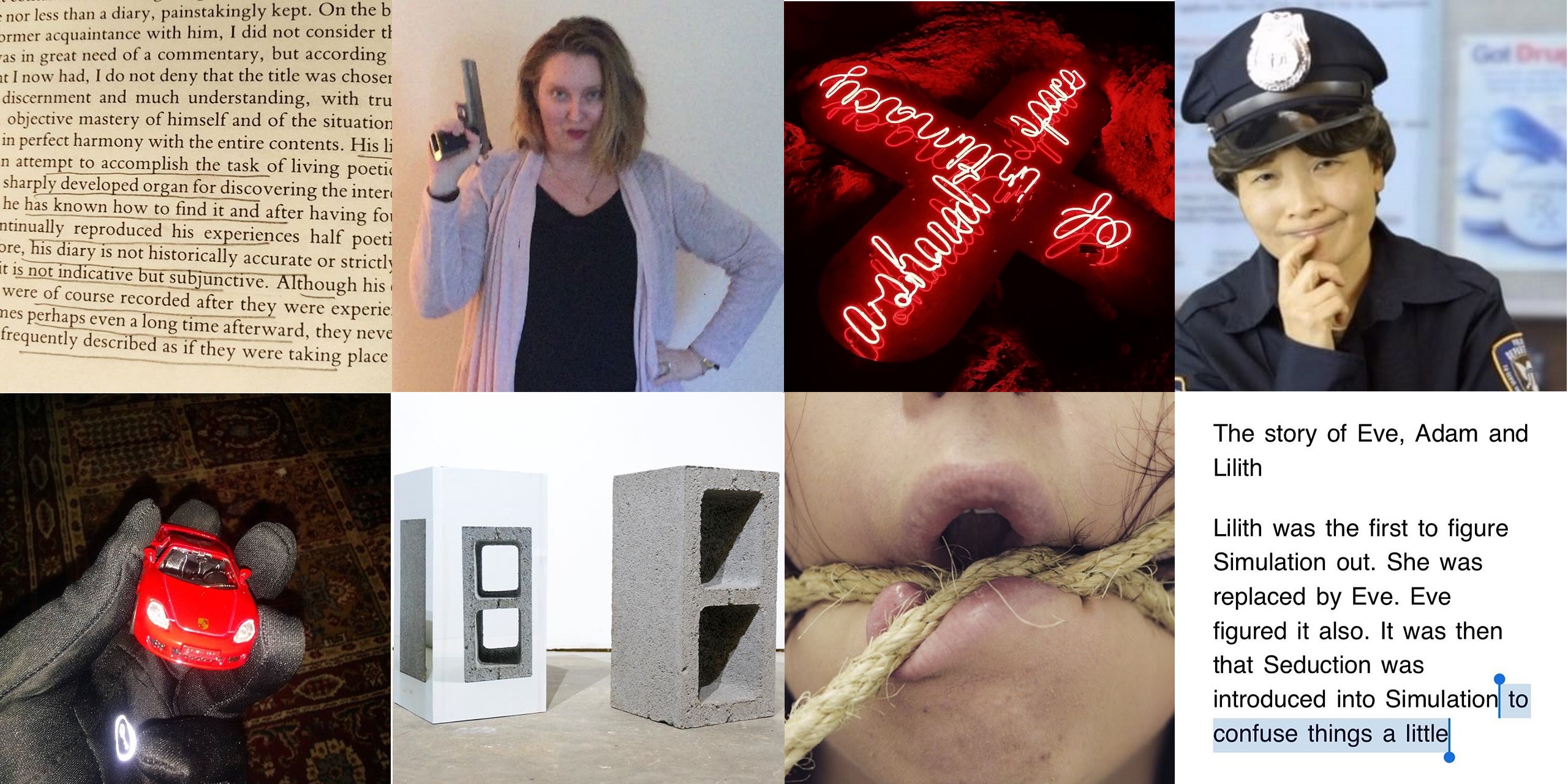
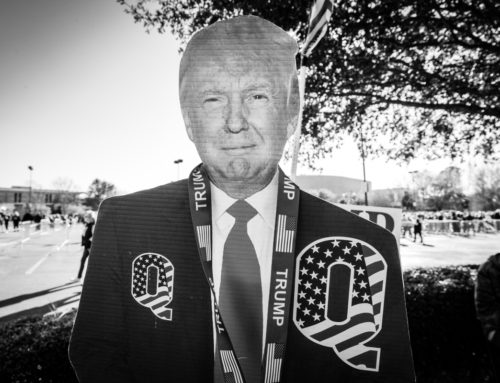


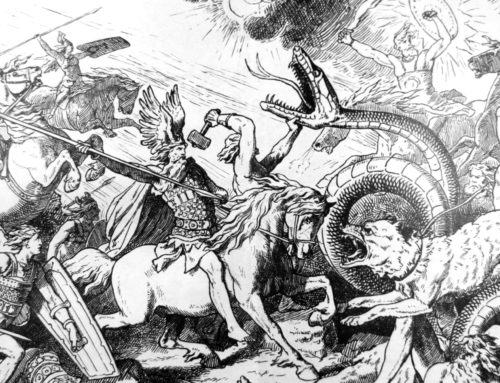
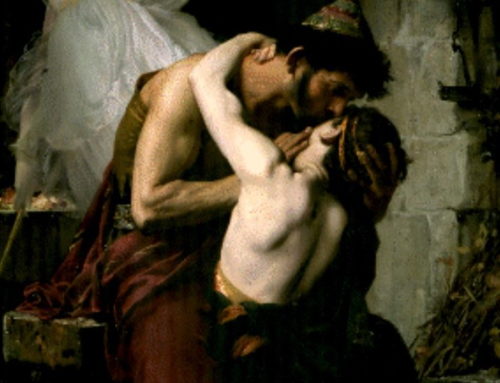
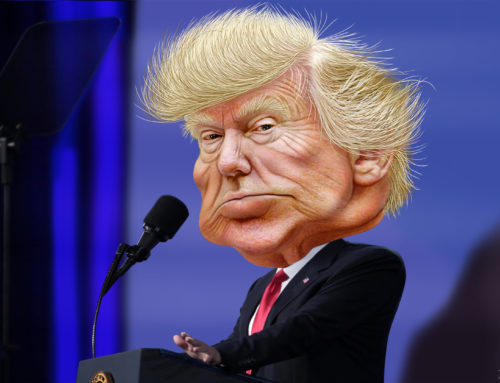
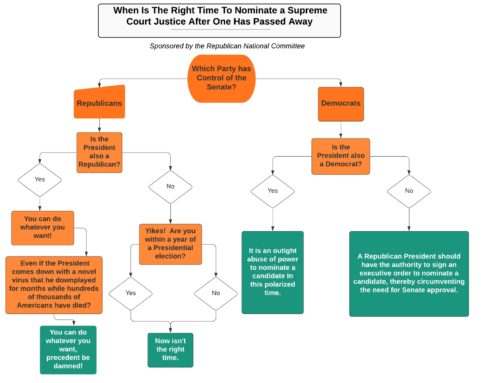
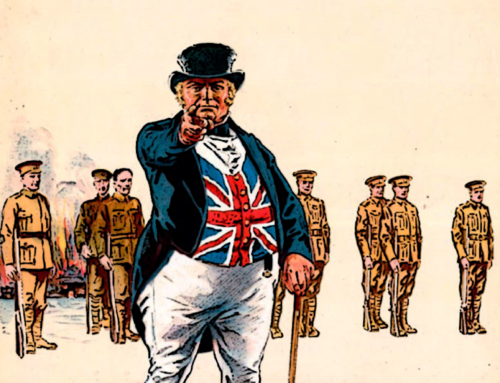
Leave A Comment